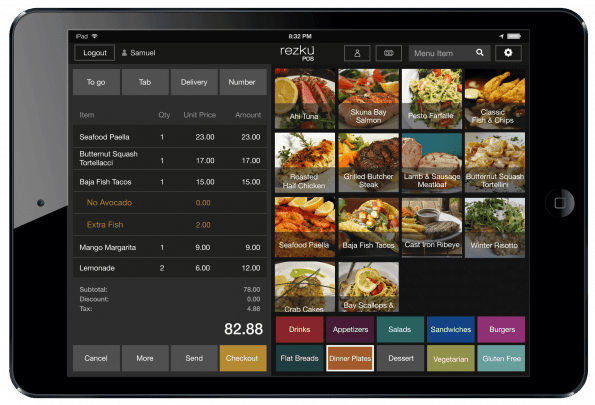
To avoid SKU formatting issues, we recommend exporting product catalog as an XLSX file.
#Lightspeed restaurant inventory export update#
To update your products using a spreadsheet file (CSV, XLSX or XLS), follow the steps below:ġ. Exporting and editing your product catalog If you make any changes to your SKU's using a CSV import we strongly recommend you check your current sequence number in Setup > General and update it if necessary to avoid any SKU duplication going forward. Important: Updating SKU's through a CSV import will not automatically update the next SKU sequence number in Retail POS. Leaving the tax rate fields blank will NOT update the tax rate to your store's default rate. For more information on these fields check out this list here. Leaving the type or tag fields blank will overwrite any preexisting type or tag data you have in Retail POS.

If you want to update your stock levels, make sure you either complete a stock order (to add stock) or an inventory count (to remove stock). Leave the field blank when you're creating new products. This is a number Retail POS generates as a unique ID for each product. Do not change or remove the ID column or IDs themselves.Before you beginīefore you begin editing your product catalog spreadsheet, these things are important to know:Īlways save a backup copy of your CSV file before you start editing it. This might be done to change pricing across the product catalog if it's the end of a season and products need to be deactivated or to update tags or product categories. You can filter the report or perform whatever calculations you require in your preferred spreadsheet viewer.Using a spreadsheet (CSV, XLSX or XLS) to format product data quickly, you can easily edit your existing product catalog in bulk. The total cost value of the item for that quantity.This is included in the report only to help identify items in your inventory. Once the report has been downloaded, you can open it with any spreadsheet viewer, such as Excel or Numbers or Google Sheets.įor a given item, you will see what the values were on the date you selected for the following:
#Lightspeed restaurant inventory export download#
You would need to download the report from the original device first, then transfer the downloaded file. Reports will only be available for download on the device you used to generate the report, so it is not possible to begin generating the report from one device, then download it onto a different one. In either case, you will need to generate the report again. If something went wrong during the report generation process, the report will show an error tag instead of a download button. Please note that, once generated, a report will only be available for 24 hours, after which time the report will appear on this page with an expired tag instead of a download button. To download a report, simply click Download. a timer indicating how long the report will remain available for download.the date and time (in the local time zone of the shop location currently logged-in to) the user initiated the generation of the report.When you return to the History report, you'll see a list of recently generated reports. You can navigate away from this page and continuing working in Lightspeed Retail and return to the report later to download the results. If the report is very large, it may take some time to generate. You can queue up multiple reports for generation at a time. Retail POS will begin generating the requested report. You can edit a user's location access permissions at any time. If a user is restricted from some shop locations, the All shops option will only include those locations the user is entitled to view. Note: A user can only select shops they have access to for report generation and will not see shops they do not have access to in the list. Select the location you'd like to see historical data for.

Select the date you'd like to see historical data for.Under Inventory Reports, click History.If your file exceeds that limit, you can either export files for each shop location individually, or use an application to split your csv file into smaller files (an internet search for "csv splitter" will yield many results). Most programs used to view csv files have a limit of around 1 million rows.


Please note that in exceptional cases, accounts with many locations and a very large number of items in their inventory may generate a csv file that is too big to open. Retail POS will export the historical asset report to a csv file, which you can then use to perform whatever calculations you require. This is particularly useful when filing your taxes. The Historical Asset report lets you see the value of your assets on a particular date.


 0 kommentar(er)
0 kommentar(er)
